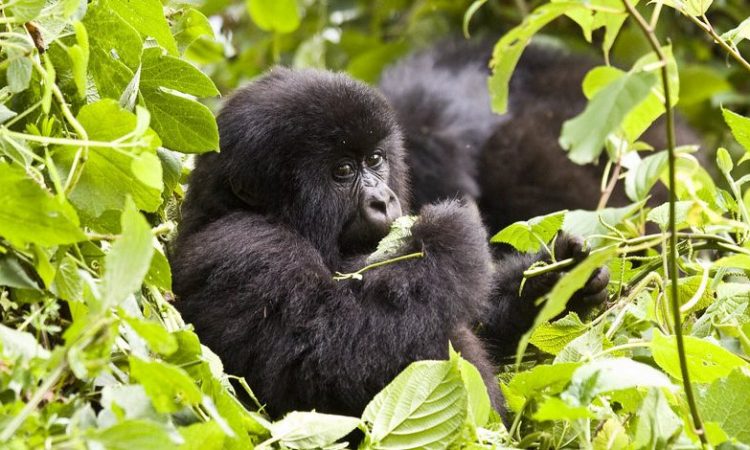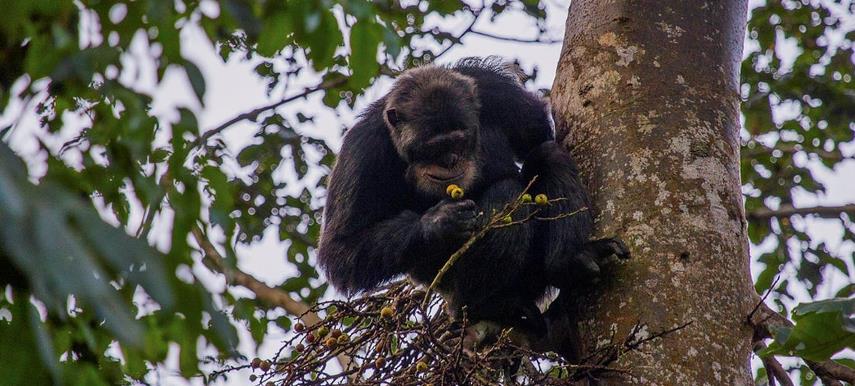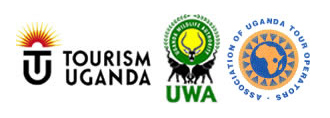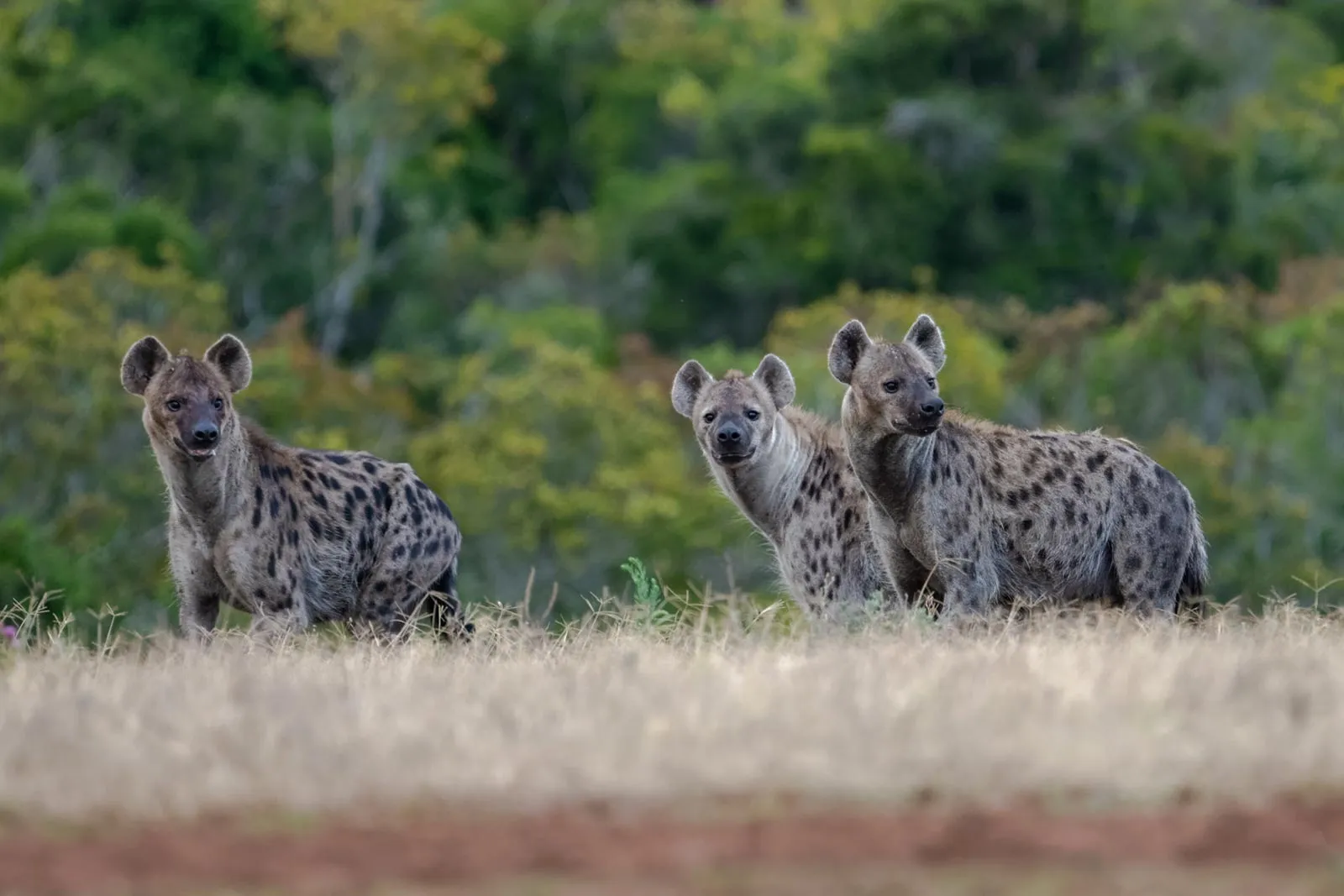
Animals in Lake Mburo national park
Animals in Lake Mburo national park
Animals in Lake Mburo national park : Lake Mburo National Park named after Lake Mburo the biggest lake among the chain of lakes dominating the park is safari wonderland and one of the amazing wildlife destinations to visit on a Uganda safari.
Lake Mburo National Park is the smallest savannah national park in Uganda at a size of 260 square kilometers, the park is located in Kiruhura District in western Uganda and is situated approximately 30 kilometers by road, east of Mbarara the largest city in the region and approximately 240 kilometers by road, west of Kampala – the capital city of Uganda.
Lake Mburo National Park is a scenic park with sculptured landscape with rolling hills and idyllic lake shores and dominated by a varied mosaic of habitats including forest galleries, seasonal and permanent swamps, rich acacia woodland and grassy valleys which support a huge variety of wildlife.
The park is situated near the equator and because of this, its rainfall is bimodal with long rains occurring from February to June and the short rains from September to December.
Common Animals in Lake Mburo National Park
Zebras
Lake Mburo National Park is the only national park in Uganda where you will find zebras in plenty and you are guaranteed to see them during your Uganda safari visit to the park. Lake Mburo National Park is dubbed as “The Wishers of the wild” as you will hear the zebras hissing or whispering while on the drive.
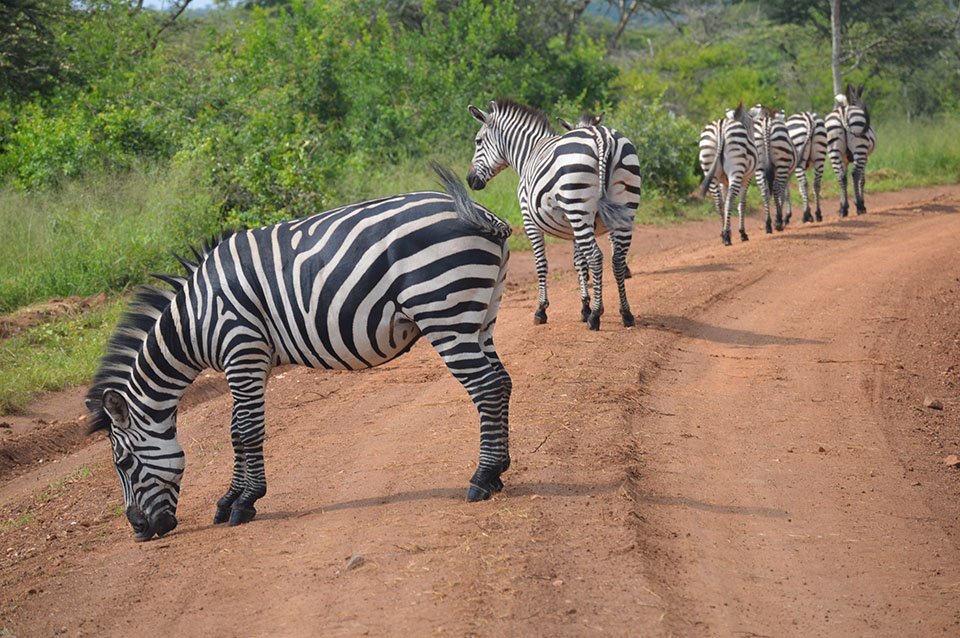
Buffaloes
Buffaloes are common animals you will sight in Lake Mburo National Park, these big animals which are part of the big Five family are easily seen grazing and munching in the grass gracefully.
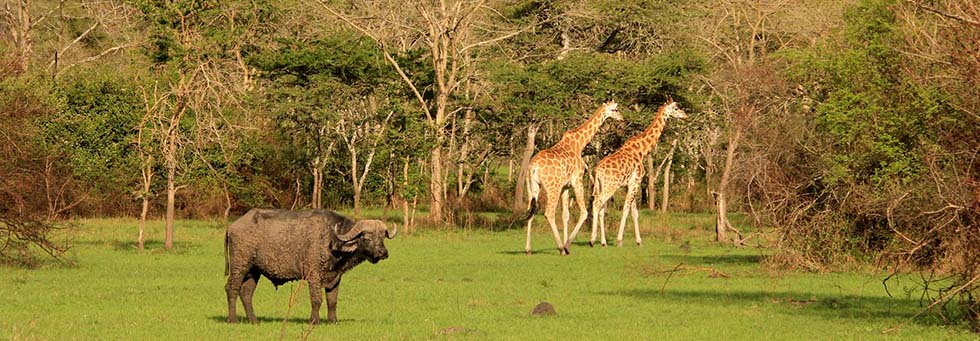
Hippos
Hippos are abundant in the chain of Lakes found in Queen Elizabeth National Park and Lake Mburo is the best place to see them swimming in the waters, these hippos are best spotted during a boat cruise on the lake and in the evening when they get out of the water to graze on land.
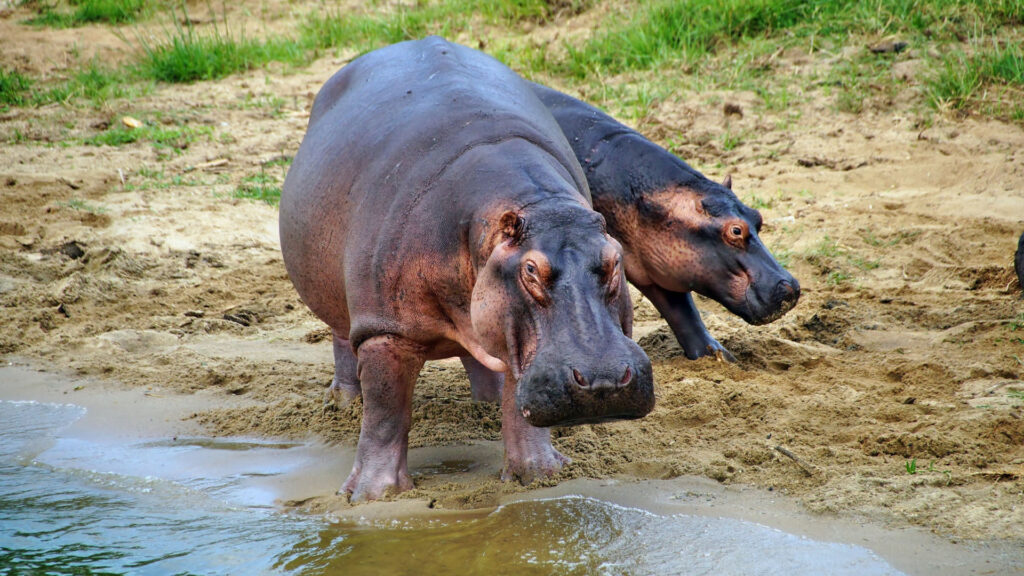
Giraffe
Giraffes are another commonly seen animal in Lake Mburo National Park, the giraffes used to be nonexistent in Lake Mburo National park until they were recently introduced by Uganda Wildlife Authority. A group of giraffes was transferred from Murchison Falls National Park to Lake Mburo national park, they are currently in small numbers and are regarded occasional as they are getting familiar with their new home.
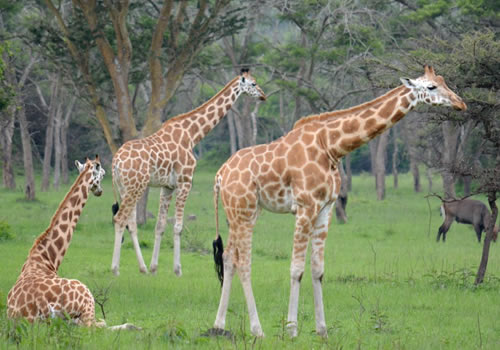
Leopards
Lake Mburo National Park is a good place to see these solitary creatures who are also part of the Big Five family, the leopards are commonly seen on the leopard rock in the park. Leopards are shy and elusive and because of these traits, they are considered occasional, leopards are also masters of camouflage and hard to find. The best time to see the leopards in Lake Mburo National Park is during night game drive or early morning game drive.
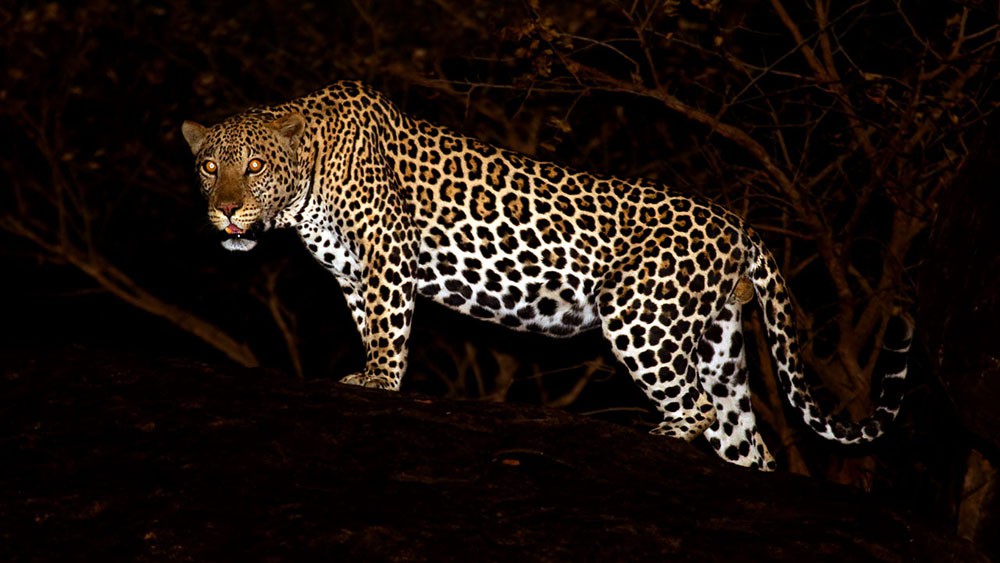
Hyena
There are several hyenas in Lake Mburo National Park, however they are referred to as occasional as they are not regularly seen.
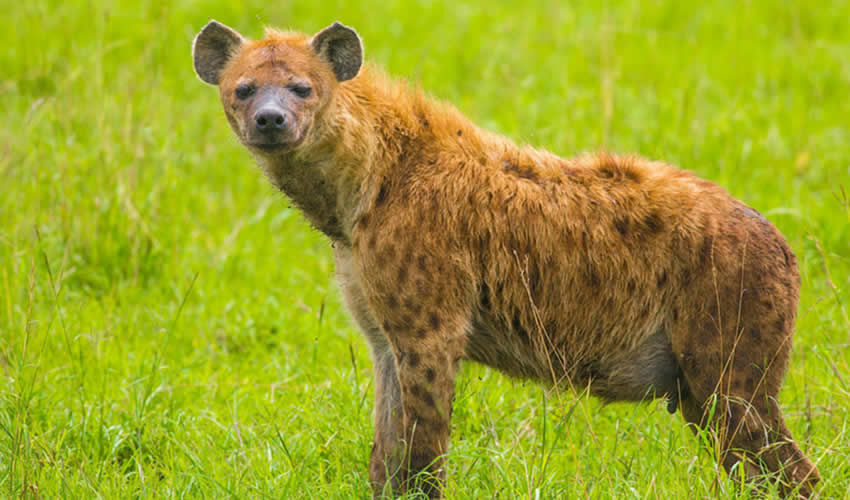
Lions
In the recent years, lions were known to be extinct in Lake Mburo national park, however because of the stability of the park, they are slowly returning. Lions are rare and they are only seen by very lucky visitors and about 2 lions have been.
Impalas
Lake Mburo National Park is the only place in Uganda where the impalas are found, these playful animals are easily seen while grazing in the savannah plains of the park.
Other animals found in Lake Mburo National Park include elands, topis, duiker oribi, Bohor reedbuck, sitatungas, Nile crocodiles, klipspringer and several primate species such as baboons, black and white colobus monkeys among others.
In addition to Animals/ wildlife, Lake Mburo national park is loved by tourists for its avian life, the park has about 313 different bird species including 8 of the 12 species of Lake Victoria Basin Biome that occur in Uganda, the elusive Shoebill stork and white-winged warbler. Other birds in the park include Crested, Coqui, and the Red-winged Francolins, Blue-spotted Wood Dove, Brown Parrot, Barefaced Go-away bird, Harlequin and Blue Quails, Common Button Quail, White-headed and Black-billed Barbet, Greenwood Hoopoe, Common Scimitarbill, Blue-napped Mousebird, Blue-breasted and Shining-blue Kingfishers, Lilac-breasted Roller, African-grey Hornbill, the Nubian, Buff-spotted, Brown-eared, and the Grey Woodpeckers, Trilling, Stout, and Wing-snapping Cisticolas, Red-necked Spurfowl, Black-bellied Bustard, Temminck’s Courser, African-wattled Plover, Rufous napped and Flappet larks, Rufous-chested Swallow ,Yellow-throated Longclaw, Black-winged Bishop, Chubb’s, Carruther’s and a number of other Cisticolas, the Lesser and Great Swamp Warblers, among others.
How To Get to Lake Mburo National Park
There are two routes connecting Lake Mburo National Park to the main surfaced road between Masaka and Mbarara, the better approach road to use branches south at Sanga, 37 kilometers east of Mbarara coming from the west.
From Kampala, the best route to use branches south from the 50 kilometers marker for Mbarara, about 20 kilometers past Lyantonde. The drive takes approximately 4 to 5 hours.
It is essential to use a 4×4 vehicle as roads can get slippery and impassable most especially in wet season.
Where to Stay in Lake Mburo National Park
There are limited accommodation facilities in Lake Mburo National Park and the available facilities range from Luxury, midrange to Budget and the include
Luxury accommodations
- Mihingo Lodge
- Rwakobo Rock
- Arcadia Cottages
Midrange accommodations
- Mburo Eagle’s Nest
- Kimbla Manata Camp
- Lake Mburo Safari Lodge
- Hyena Hill Lodge
Budget accommodations
- Rwonyo Rest Camp
- Lake Mburo Campsite

